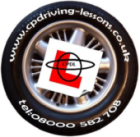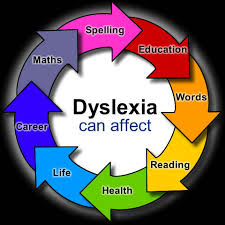
Driving lessons finchley, Hendon, Mill Hill
Dyslexia
If you are one of the 250,000 or so people learning to drive who have dyslexia then you will be pleased to know that help is at hand!
Before I started researching, like many other people I thought that anyone who had dyslexia just ‘muddled their words up!’ How wrong I was. So often dyslexics have issues with short term memory, making sense of what they see on the mirrors(reversed images), sequencing issues and remembering left from right also, some people do not realise or admit that they have some mild form of dyslexia or dyspraxia until they start to drive – all of these things can make learning to drive a nightmare, and cost you a fortune in extra lessons. How would you feel if it didn’t have to be that way?
At CPDL we have studied all aspects of Dyslexia so that we can help our pupils.
For Learners with Dyspraxia one of the biggest issues is Spatial Awareness
Poor spatial perception affects how we focus and understand our body's relationship to the environment. Another example would be that our spatial perception constantly works to prevent us from walking into walls, chairs, doors, etc. When we are driving, we have to be careful to stay in our lane and not jump the curb when we park. In these cases, we have to judge the distance, position, and dimension of other objects in relation to ourselves. Even when we want to go somewhere we've never been before we have to orient ourselves, which uses this cognitive skill.
Pupils with these conditions make more of an effort. They don’t use it as an excuse.
Your instructor will help you with different techniques as to understand How Close or Far you are from the kerb or parked cars as well as to How to Focus on the road ahead so that you can keep your car within your lane however, you Must find a Professional Therapist as they are Fully Qualified to help you training your brain to adjust to different situations.
There are also games that will help you estimulating your brain to solve Spatial Awareness issues.
Bellow you will find some links, by clicking on the images, to help you training your brain to recognise distances, positon and dimension of objects around you
Colorblind and Driving
1 Please Tell the driving instructor that you are colorblind.
2 Pay attention to the traffic lights.
The top light means to stop and
the bottom light means you can go.
It is extremely important to remember where the red, yellow and green lights
are because you are unable to see the color.
If you don't remember where they are, you might run a red light and get into
an accident or you might think that a green light is red; then you would stop
and get honked at.
3 Be extremely careful at the traffic lights.
It might be more difficult for you as there is less indication of which light is lit
- Driving if you are color blind is a dangerous activity; exercise caution when driving although driving is a dangerous activity altogether!
- Driving without knowing where each traffic light is, is extremely dangerous and can lead to serious injury or death in the case of a car accident







